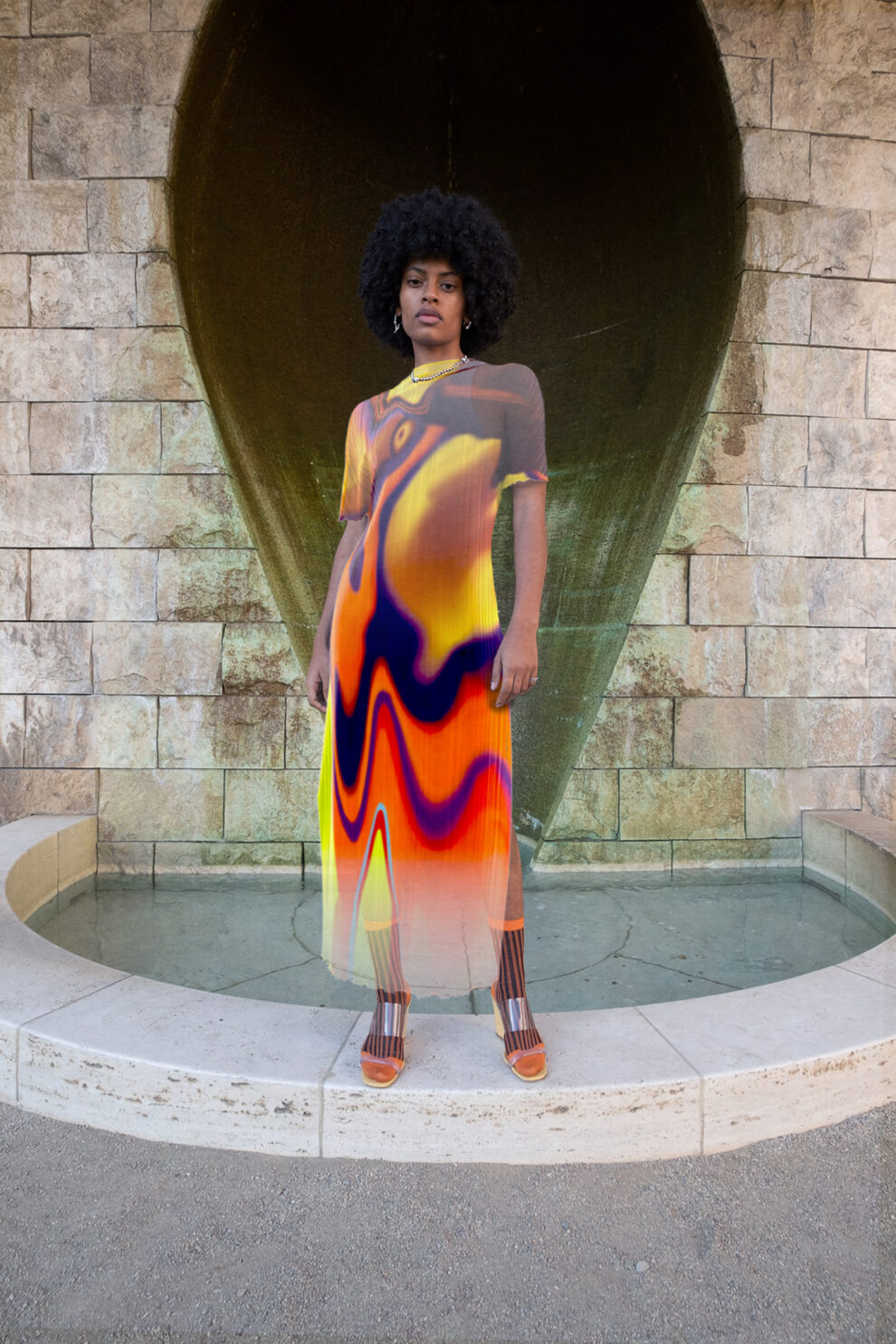While the reality of augmenting retail has literally put virtual try-ons front and center for makeup, sneakers, eyewear and furniture shoppers, the consumer proposition for apparel has really only just begun. The challenges are steep, but interest in AR clothing has been gaining momentum in recent years, especially as NFTs and metaverse mania have put a spotlight on 3D digital fashion.
These factors tee up a potential influx of virtual fashion try-on experiences within the next few years, if not sooner, as the tech and the brands that adopt it gear up to make their mark.
One of the most visible players in this space is social media behemoth Snap Inc., as its investments for Snapchat double down on cloth simulation and body tracking technology. The company revealed that it’s been working on these efforts last year, and it’s clear they’re key priorities, as it has been refining them and expanding the scope of materials.
The result is already creating new experiences that entertains users. But that’s not the only motivation. Snap is also laser-focused on how AR can drive fashion retail.
“I think for us, a huge area that we’ve really invested in is not just bringing these incredible technologies to Snapchatters, but actually how we can help partner with businesses and brands, and bring our technology to their own applications and websites,” Carolina Arguelles, Snap’s global AR product strategy and product Marketing lead, told WWD.
This vision is apparently so big, it hops the fence to reach retail on its home turf, not just on the platform.
“It’s really meeting customers [with] the mind-set on shopping and helping to bring a shopping camera to cameras everywhere, not just the Snapchat camera,” she added.
Enticing people to buy products is an obvious benefit of letting them try on goods, and so then making that easier by allowing them to check out the experience at home is likely to boost sales. But that’s not the only goal in retail.
The company released new data this month that casts AR as a highly effective tool for slashing product returns. A survey conducted by Alter Agents on behalf of Snap and Publicis Media found that two-thirds of consumers are less likely to return merchandise after using AR. As for fashion, nearly three-quarters said they were likely to buy clothes after using AR in the future. The figure for beauty, where AR is already well-established for makeup try-ons, is 69 percent.
Naturally, the tech company has a vested interest in touting the technology. But with the report’s scope and reach, the results look meaningful. The survey polled more than 4,000 shoppers ages 13 to 49 in the U.S., the U.K., France and Saudi Arabia.
And Snapchat is far from alone.
From a tech perspective, numerous vendors and platforms have been honing their 3D chops, digitally interpreting clothing for design, collaboration and prototyping. Many of those companies are eyeing the landscape, while others scoop up experts in the field from gaming and entertainment companies — Pixar actually employs tailoring and simulation artists for its animated works — to develop and deploy solutions.
The array of efforts spans initiatives from known providers like Threekit and 3DLook to Walmart, which launched virtual fitting rooms courtesy of its Zeekit acquisition. That only scratches the surface. Many more have been entering the space, offering everything from off-the-shelf solutions to custom collaborations for the fashion world. Avataar, an AI and computer vision platform, closed a $45 million Series B funding round earlier this year, and this month, it launched a new self-serve platform to automate 3D AR features for merchants.
AR start-up Zero10 aims to take on Snapchat head on.


In an exclusive, the company told WWD that it’s about to release details on a new launch that brings AR-fueled shopping to the Maisie Wilen brand. Zero10 has also worked with emerging and established brands like Alexandra Sipa, Tommy Cash, Barragan and Edward Crutchley.
When asked why Zero10 chose to develop its own solution, instead of relying on Snap or another partner, George Yashin, chief executive officer, explained that it was a matter of control: “We talked to Snapchat, maybe a year ago, and they asked us to use their SDK,” he explained to WWD. “But we have no control over it. It’s very important to have control over what you do, so we have a huge tech and 3D team. All our teams are in house, and we are solely focused on digital fashion.”
After building from its $2 million investments from angel investors, it’s working on a seed round, while also preparing to launch a software development kit for cloth simulation and body tracking. It’s also developing a solution to move AR forward in physical retail.
The main differentiation between solutions from Snap and Zero10 is body fit data. It’s not available for the latter today, though it may come in a future release. Meanwhile, it’s very much part of the equation for the former.
Snap’s acquisition of Fit Analytics last year signaled its intentions, and if that wasn’t clear, the company’s recent partner summit spelled it out. The social media giant announced size-prediction among a whole host of new features in April, and the work won’t stop there.
Where it goes next, only Snap knows. But it will be a culmination of 10 years of AR development for the company. To understand that trajectory better, Arguelles will join WWD in a session on augmented reality in fashion later this month.
The stakes are high. Estimates peg the global market for augmented reality in retail to be worth roughly $2.36 billion this year, with growth projected to reach something in the neighborhood of $23 billion by the end of 2032. Fashion’s slice of that will likely rely, at least in part, on metaverse applications.
Yashin envisions that as well, and he is already weighing how his augmented reality technology can tie into those immersive environments, he teased to WWD. It’s an ambitious road map, but the fashion tech executive doesn’t seem cowed. Having previously founded Gen Z fashion brand ZNY, he knows the challenges on the fashion front, and in terms of technology, his legion of developers and engineers are up for the task.
With the massive push behind AR applications for fashion, it’s more than likely that someone will figure out how to crack it before long, whether that’s Yashin, Arguelles or one of myriad other providers that have landed in this space or are about to enter. And that means that AR for fashion may finally arrive, ready to connect the massive real-world business of retail and fashion to the emerging virtual world.






